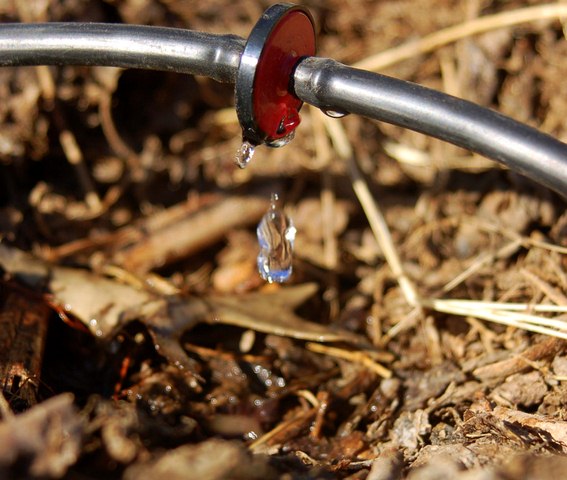Best Home Irrigation Systems — Knowing the advantages and disadvantages of automatic watering systems helps choose the best system for irrigating different flowering plants and vegetables.

Ornamental garden plants and vegetables require just the right amount of water to achieve optimum growth. Too much water, especially for pot or container grown plants can cause just as much damage as too little.
An automated irrigation system can ensure that each plant gets just the right amount of water with a minimum of waste, and great savings in time and work compared with watering with a regular hose or watering can.
However, different types of automatic home watering systems have different advantages and disadvantages and are better suited for different plants and situations, so it’s important to choose the best irrigation system or systems for your particular garden.
All these different watering systems may be turned on and off manually, or controlled by an automatic timer, but the latter is more efficient and saves both work and water if properly set.
Water is fed to individual dripper heads which may have an adjustable flow or may deliver a measured amount of water (normally 2-4 litres or about 5-9 pints an hour).
Drip systems are ideal for watering container-grown plants or small to medium size plants grown at individual stations. You can assemble your own drip feed system from individual components, or they are available as complete irrigation kits.
They are less suited for large plants with spreading root areas, or for densely planted beds.
Because the water is delivered precisely where it’s needed there is very little wastage or evaporation loss.
Another major advantage is that in the United Kingdom it is permissible to use a drip system controlled by an automatic timer for watering during a hosepipe ban. In other countries, the rules should be checked with the local water board.
Water is fed to individual drippers which are normally adjustable to vary the rate of delivery and the area covered.
Sprinkler systems are better for larger areas, densely planted beds and lawns.
There are also more sophisticated systems, particularly for use on lawns, where the sprinkler heads are sunk into the ground and pop up when required to deliver water.
Wastage is normally higher than for a drip feed system, but evaporation loss may be reduced by setting the system to water at night.
The soaker hose is made of porous rubber in varying lengths, and water seeps out of the hose along its full length, seeping into the soil for a foot or so on either side.
It is particularly useful for watering thickly planted flower or vegetable beds, where it can be found between the plants or even buried just below the surface.
Wasted water can be reduced to an absolute minimum.
Sprinkler hose has perforations in its surface at intervals along its length to produce a regular series of sprays extending for 45-60cm (1 1/2 to 2 feet) on either side.
Sprinkler hose can be used in the same way as a soaker hose, although not buried, wastage is rather more due to evaporation loss.
Choosing the right automated watering systems is the best way of making sure that your garden plants receive just the right amount of water for optimum growth with minimum work and wasted water.